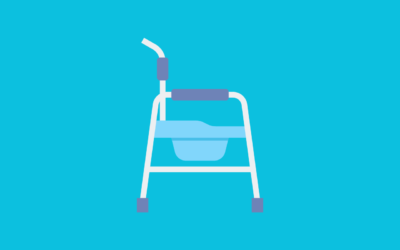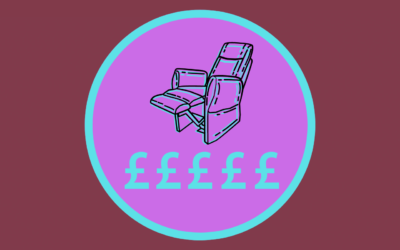Key Takeaways For Joint Supports
Understanding Joint Supports: This guide explains the basics of joint supports and their role in alleviating discomfort and improving mobility. It offers insights into selecting the right support based on individual needs and considerations like fit, comfort, and durability.
Knee Support Insights: Learn about the effectiveness of knee supports stabilising the knee to distribute weight away from the joint. Understand the importance of seeking professional advice for choosing the appropriate knee brace and ensuring a good fit.Stabilisation
Joint Stabilization Techniques: Explore various joint functions, such as braces, physical therapy exercises, weight management, and orthopaedic. Recognize the importance of consulting with medical professionals to determine the option.
Top Joint Supports
Many people with discomfort and limited joint mobility find that joint support helps them feel better and move more freely.
This post will provide an overview of joint supports and discuss some things to consider before buying one. Several joint supports exist, each potentially alleviating pain and improving mobility.
Not only should you think about the joint pain or mobility issues you’re having while shopping for joint support, but also how well it fits, how comfortable it is, and how long it lasts. The right joint support may help you move more freely and feel more at ease in your daily life.
What Do Joint Supports Do?
Joint support is helpful for many patients who suffer from joint pain and restricted movement. In this piece, we’ll review the basics of joint support and discuss some factors you should consider before purchasing. There are several joint supports on the market, and they may all help with discomfort and movement. While searching for joint support, it’s important to consider the type of joint discomfort or mobility concerns you’re experiencing and the product’s fit, comfort, and durability. With the proper joint support, you’ll be able to move about more freely and have less discomfort in your everyday life.
Is It Good To Use A Knee Support?
A knee brace is commonly prescribed for knee pain due to an injury or medical condition. Wearing a knee brace that supporstabilises the knee and distributes weight away from the joint may be important to keep up with your regular exercise routine without feeling pain. It is recommended that you seek the guidance of a medical practitioner or a physical therapist who is experienced in treating your condition when deciding which knee brace is best for you.
Do Knee Supports Need To Be Tight?
Knee braces can be tight to be effective. It must support you without impairing mobility or making you feel uneasy. Get fitted for a knee brace by a medical professional or physical therapist to ensure a good fit.
Does Ankle Support Help Arthritis?
You may alleviate ankle arthritis pain in some people by wearing an ankle brace. Arthritis, which may affect any joint in the body, can also cause inflammation and discomfort in the ankles. As they support the ankle and reduce stress on the joint, ankle braces have been demonstrated to reduce pain and improve mobility. However, consulting a medical professional or a physical therapist may help you identify the best treatment for your condition.
What Is Joint Bracing?
One item of orthopaedic gear, a joint brace, serves to do just that by giving damaged joints the support and stability they need to heal. People with arthritis or other joint-weakening diseases may benefit from wearing a joint brace to stabilise their joints. Patients may choose the best joint brace based on their unique needs and goals from various alternatives. If you need advice on selecting a joint brace, speak with your doctor or physical therapist.
How Stabilise a Joint?
Many techniques existabilisingilising joints, such as:
- A brace or other orthopaedic aid to help alleviate pressure on a damaged joint.
- Physical therapy exercises to strengthen the muscles around the joint may increase the joint’s stability.
- It eliminates or drastically cuts down on activities that aggravate the joint.
- To reduce stress on the body’s joints, it’s important to maintain a healthy weight.
- Crutches or a cane take some of the weight off a hurt limb.
Identifying the best approach to stabilisation requires seeing a doctor or physical therapist. The nature of the disease and the patient’s unique circumstances will dictate the optimal treatment strategy.
What Is The Best Support For A Weak Knee?
Find out what to look for and how to narrow down your options when shopping for a knee brace to treat your condition. Some options are:
- Knee sleeves, which are compression garments made of neoprene that go around the knee, may be used to reduce pain and swelling.
- Securing the knee with an elastic bandage might help prevent further damage.
- The knee immobiliser prevents the wearer from changing and cannot change the knee’s bending or straightening vision. They are often used after serious medical procedures or accidents.
Talking to a doctor or physical therapist about your condition and needs might help identify the most beneficial assistance.
What Is The Best Support For An Arthritic Knee?
Individual needs and conditions should be considered while determining the best knee support for arthritis. Some options are:
- Knee sleeves, which are compression garments made of neoprene that go around the knee, may be used to reduce pain and swelling.
- Securing the knee with an elastic bandage might help prevent further damage.
- Kneport that has more rest and knee sleeve supports helps stabilize the knee. These braces often support the knee as it recovers from injury or surgery.
- The knee immobiliser prevents the wearer from changing and cannot change the knee’s bending or straightening vision. They are often used after serious medical procedures or accidents.
A knee brace, medication, physical therapy, and other treatments recommended by a doctor may reduce arthritis symptoms.
What Is The Difference Between A Knee Brace And A Knee Support?
Comparing the stability a knee brace provides with a knee support is like comparing apples and oranges. A knee wrap or sleeve is all about compression and support for the knee joint. Protecting the knee after surgery or an injury is common practice. Knee braces and supports come in many shapes and sizes; if you need help, choose and go to your doctor or therapist.
How Can I Reverse Arthritis In My Knee?
There is currently neither a cure nor an effective treatment for arthritis. There is hope, however, since several therapies have been shown to reduce arthritis pain and increase mobility. Possible changes:
- You may alleviate knee discomfort and swelling using nonsteroidal anti-inflammatory medicines (NSAIDs) (NSAIDs). Patients with rheumatoid arthritis can use disease-modifying antirheumatic medications (DMARDs) and biological treatment to alleviate symptoms and lengthen their lifespan.
- Stretching, strengthening the muscles surrounding the knee, and increasing the joint’s range of motion may all be part of the physical therapy plan for a painful, immobile knee.
- A knee brace or cane can help alleviate discomfort, increase mobility, and prevent additional knee instability, stabilising the knee and distributing the user’s weight more evenly over the joint.
- You may alleviate arthritis-related knee pain and tension by starting and sticking to a good weight-management programme.
You should discuss treatment options for knee arthritis symptoms with a doctor or physical therapist for the most appropriate care.
Top Joint Supports
Related Joint Support and Mobility Aid Articles
- Best Compression Socks – Improve circulation and provide support with top-rated compression socks.
- Best Circulation Exercises for Legs – Discover exercises to enhance circulation and joint mobility.
- Best Knee Scooters – Explore knee scooters designed to support recovery and mobility.
- Mobility Aid Questions – Answers to common questions about selecting effective mobility aids.












